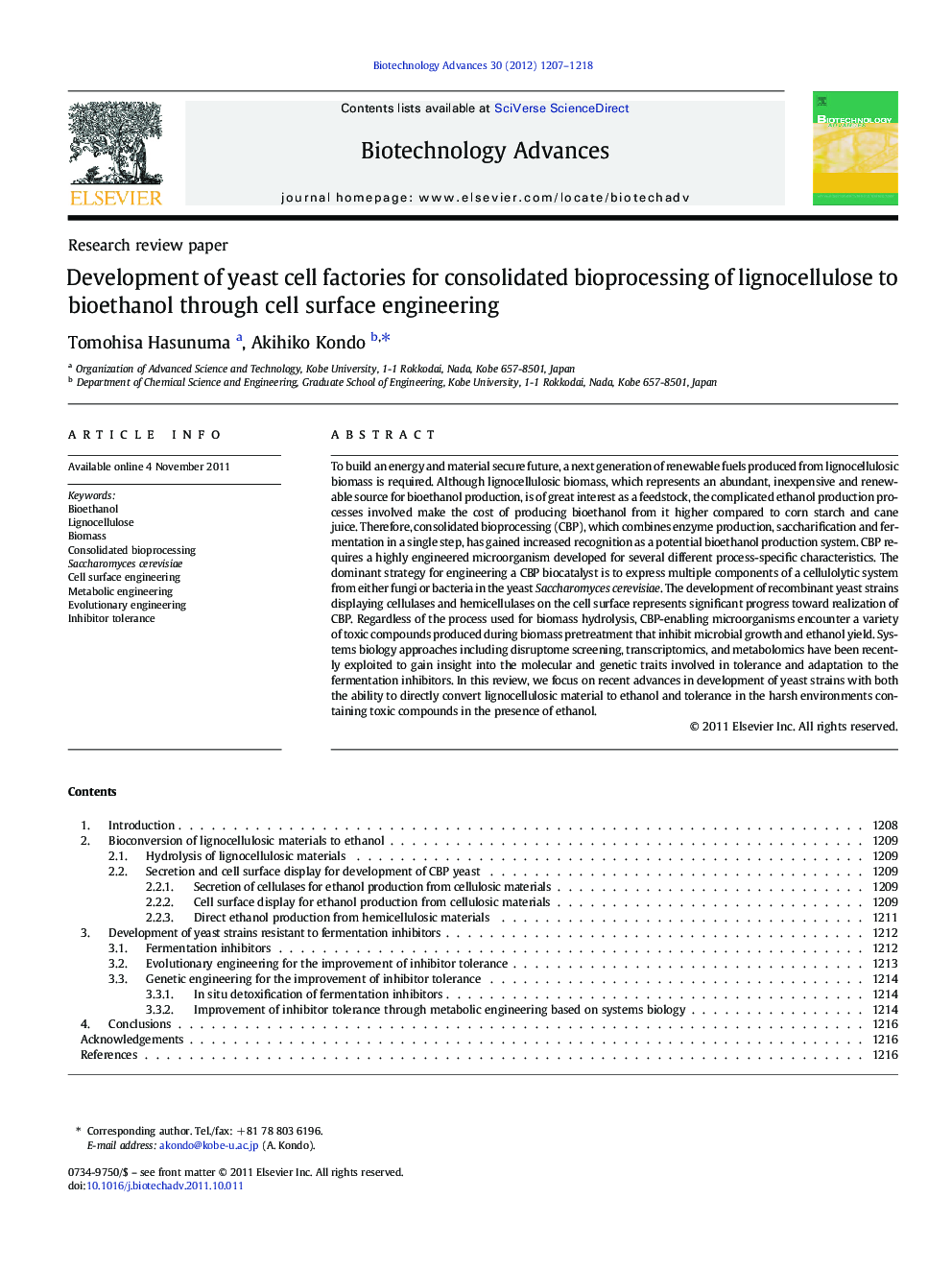| Article ID | Journal | Published Year | Pages | File Type |
|---|---|---|---|---|
| 6486714 | Biotechnology Advances | 2012 | 12 Pages |
Abstract
To build an energy and material secure future, a next generation of renewable fuels produced from lignocellulosic biomass is required. Although lignocellulosic biomass, which represents an abundant, inexpensive and renewable source for bioethanol production, is of great interest as a feedstock, the complicated ethanol production processes involved make the cost of producing bioethanol from it higher compared to corn starch and cane juice. Therefore, consolidated bioprocessing (CBP), which combines enzyme production, saccharification and fermentation in a single step, has gained increased recognition as a potential bioethanol production system. CBP requires a highly engineered microorganism developed for several different process-specific characteristics. The dominant strategy for engineering a CBP biocatalyst is to express multiple components of a cellulolytic system from either fungi or bacteria in the yeast Saccharomyces cerevisiae. The development of recombinant yeast strains displaying cellulases and hemicellulases on the cell surface represents significant progress toward realization of CBP. Regardless of the process used for biomass hydrolysis, CBP-enabling microorganisms encounter a variety of toxic compounds produced during biomass pretreatment that inhibit microbial growth and ethanol yield. Systems biology approaches including disruptome screening, transcriptomics, and metabolomics have been recently exploited to gain insight into the molecular and genetic traits involved in tolerance and adaptation to the fermentation inhibitors. In this review, we focus on recent advances in development of yeast strains with both the ability to directly convert lignocellulosic material to ethanol and tolerance in the harsh environments containing toxic compounds in the presence of ethanol.
Keywords
Related Topics
Physical Sciences and Engineering
Chemical Engineering
Bioengineering
Authors
Tomohisa Hasunuma, Akihiko Kondo,
